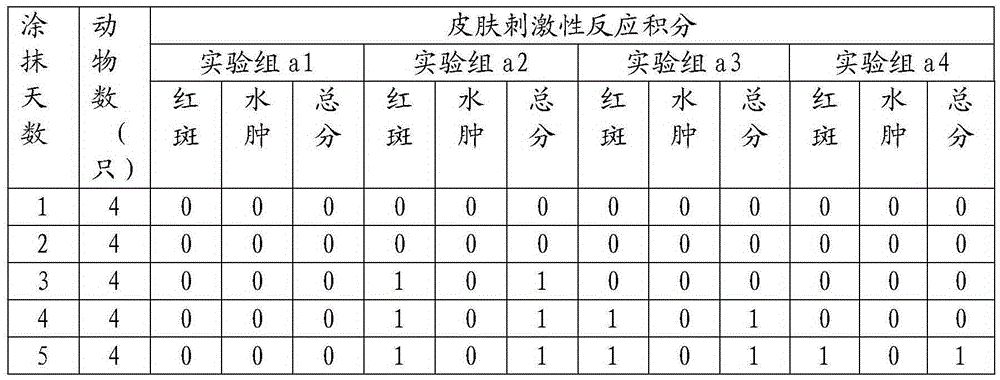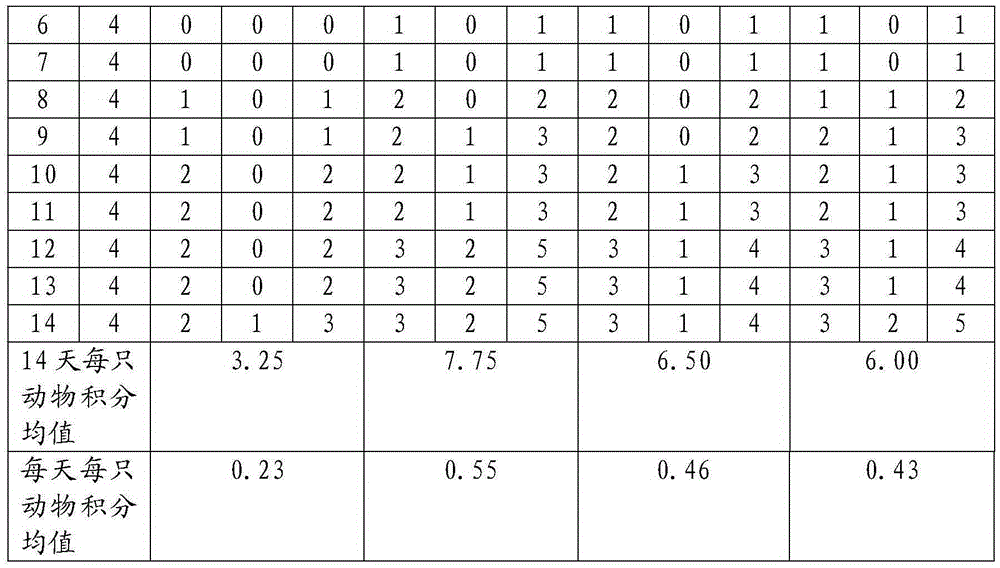Plant extract and preparation method and application thereof
A plant extract and plant technology, applied in the field of plant extract and its preparation, to achieve the effect of delaying skin aging, reducing the formation of melanin, and reducing the breeding of harmful bacteria
- Summary
- Abstract
- Description
- Claims
- Application Information
AI Technical Summary
Problems solved by technology
Method used
Image
Examples
Embodiment 1-4 and comparative example 1-3
[0094] Embodiment 1-4 and comparative example 1-3 prepare plant extract by following process:
[0095] 1. Dry and pulverize the above-mentioned plants in proportion and dosage respectively, and mix them through an 80-mesh sieve.
[0096] 2. Add 1800mL of 70% ethanol. Ultrasonic treatment with a frequency of 20 kHz was used for 50 minutes, and the temperature of ethanol in the ultrasonic treatment was 50° C.
[0097] 3. Use a filter material with a filtration precision of 100 mesh for preliminary filtration, and then use a filter cloth of 1000 mesh for a second filtration to obtain filtrate A and seal it for later use.
[0098] 4. Add 900 mL of ethyl acetate to the filter residue. Ultrasonic treatment with a frequency of 20 kHz was used for 35 minutes, and the temperature of ethyl acetate during the ultrasonic treatment was 45° C.
[0099] 5. Use a filter material with a filtration precision of 100 mesh for preliminary filtration, and then use a filter cloth of 1000 mesh for...
Embodiment 5
[0101] Embodiment 5 multiple skin irritation tests
[0102] (1) Test samples: according to the plant extracts prepared in Examples 1 to 4, they are divided into test substances a1, a2, a3, and a4 after being diluted with an equal amount of water respectively; the safflower extracts prepared in Comparative Example 1 The three white grass extract obtained in comparative example 2 and the papaya extract obtained in comparative example 3 were divided into b1, b2 and b3 after being diluted with an equal amount of water respectively;
[0103] (2) Experimental animals: Healthy, adult white New Zealand rabbits with no skin damage, common grade, a total of 32, weighing 2.2-2.5kg, provided by the Medical Experimental Animal Center of Guangdong Province (animal production license number: SCXK (Guangdong) )2003-0002), experimental animal certificate number: 0003296, experimental animal use license number: SYXK (Guangdong) 2003-0011, the temperature of the animal room is 23 ℃, the humidity...
Embodiment 6
[0120] Weigh the raw material (g) according to the following proportioning ratio:
[0121] Safflower 33, Sanbai Cao 34, Green Papaya 33
[0122] The preparation process is as follows:
[0123] 1. Dry and pulverize the above-mentioned plants in proportion and dosage respectively, and mix them through an 80-mesh sieve.
[0124] 2. Add 1400mL of 50% ethanol. Ultrasonic treatment with a frequency of 20 kHz was used for 30 minutes, and the temperature of ethanol in the ultrasonic treatment was 30° C.
[0125] 3. Use a filter material with a filtration precision of 100 mesh for preliminary filtration, and then use a filter cloth of 1000 mesh for a second filtration to obtain filtrate A and seal it for later use.
[0126] 4. Add 700 mL of ethyl acetate to the filter residue. Ultrasonic treatment with a frequency of 20 kHz was used for 20 minutes, and the temperature of ethyl acetate in the ultrasonic treatment was 35° C.
[0127] 5. Use a filter material with a filtration precisio...
PUM
 Login to View More
Login to View More Abstract
Description
Claims
Application Information
 Login to View More
Login to View More - R&D
- Intellectual Property
- Life Sciences
- Materials
- Tech Scout
- Unparalleled Data Quality
- Higher Quality Content
- 60% Fewer Hallucinations
Browse by: Latest US Patents, China's latest patents, Technical Efficacy Thesaurus, Application Domain, Technology Topic, Popular Technical Reports.
© 2025 PatSnap. All rights reserved.Legal|Privacy policy|Modern Slavery Act Transparency Statement|Sitemap|About US| Contact US: help@patsnap.com



